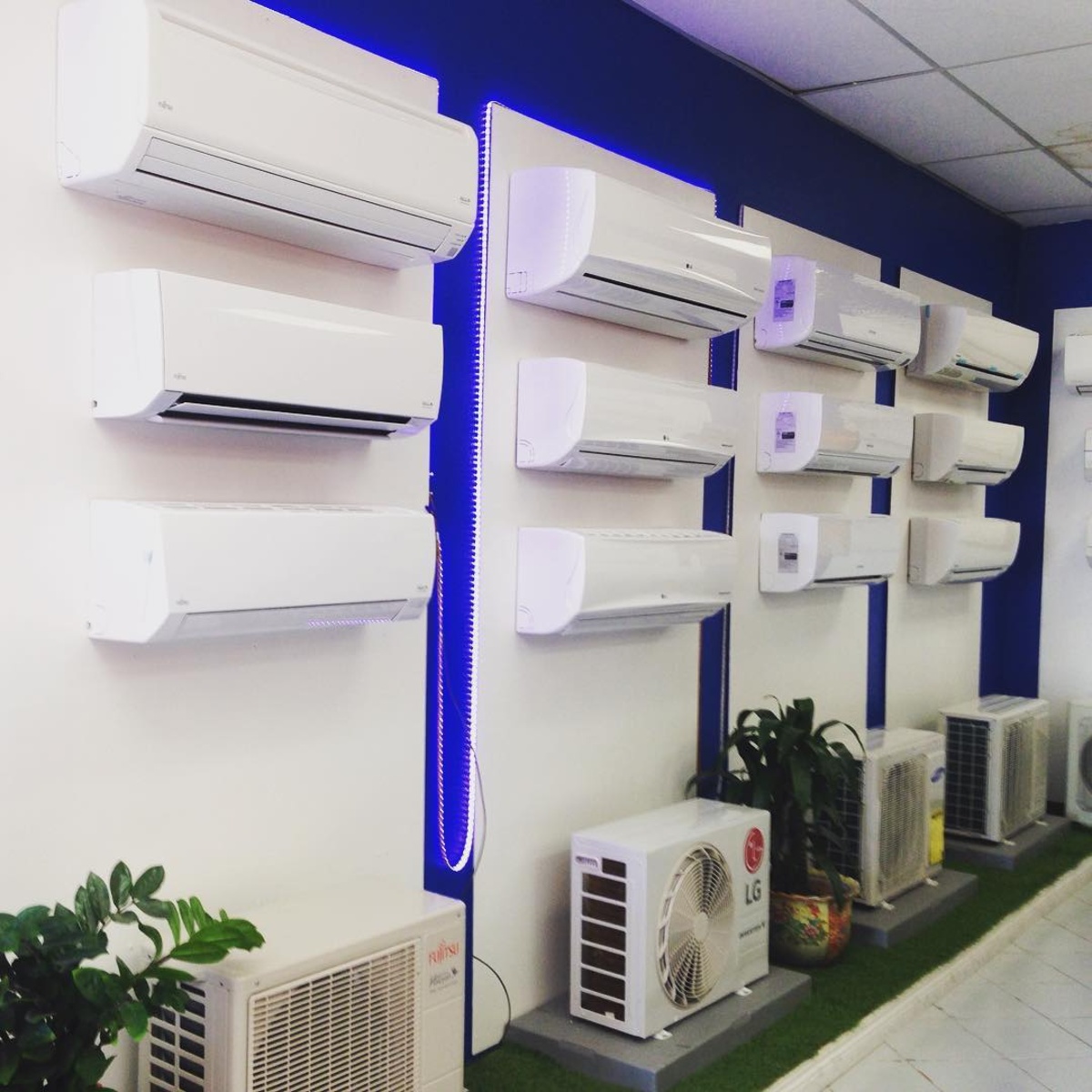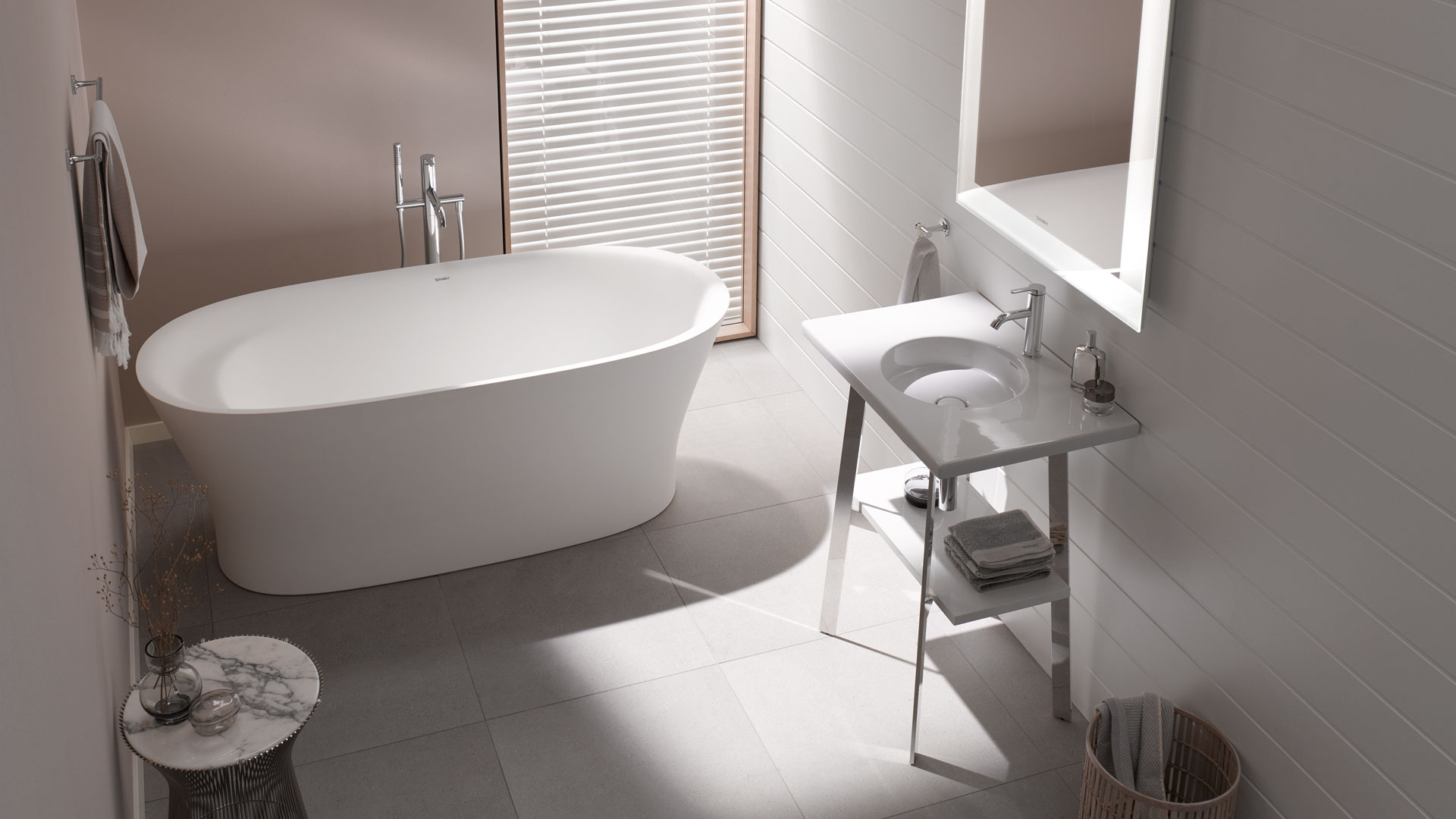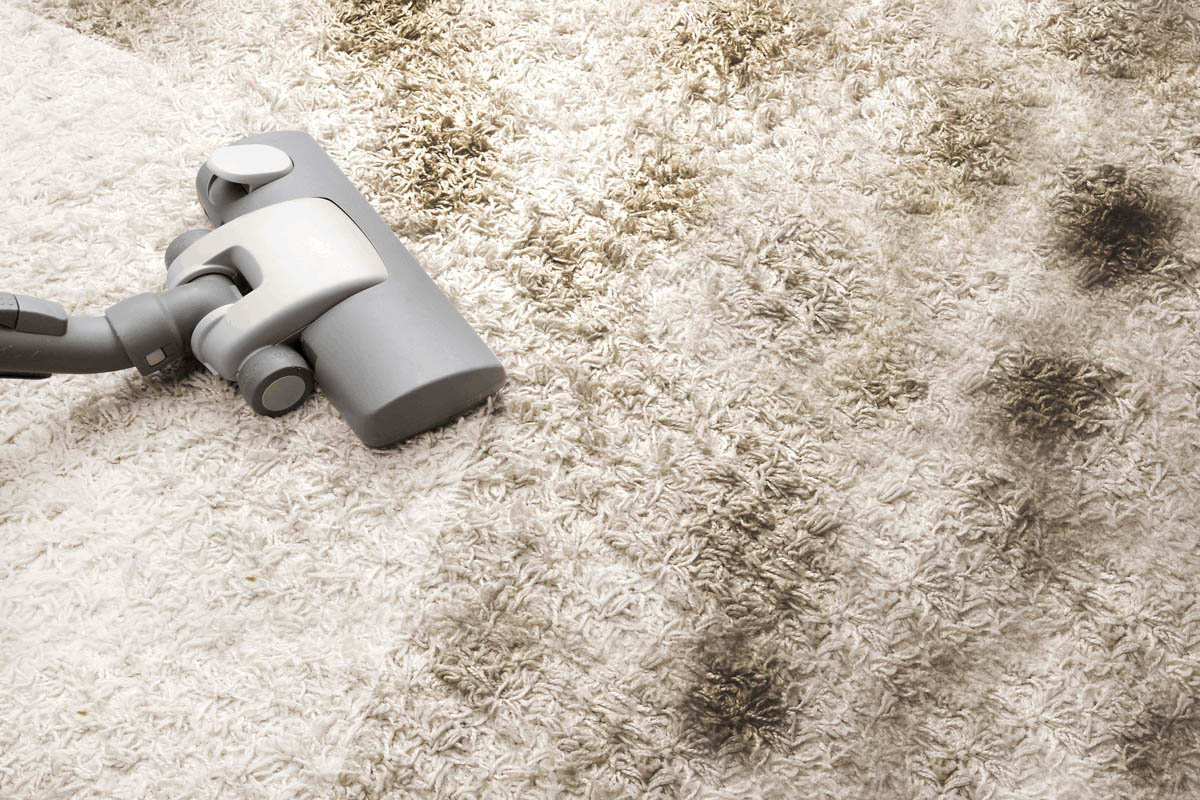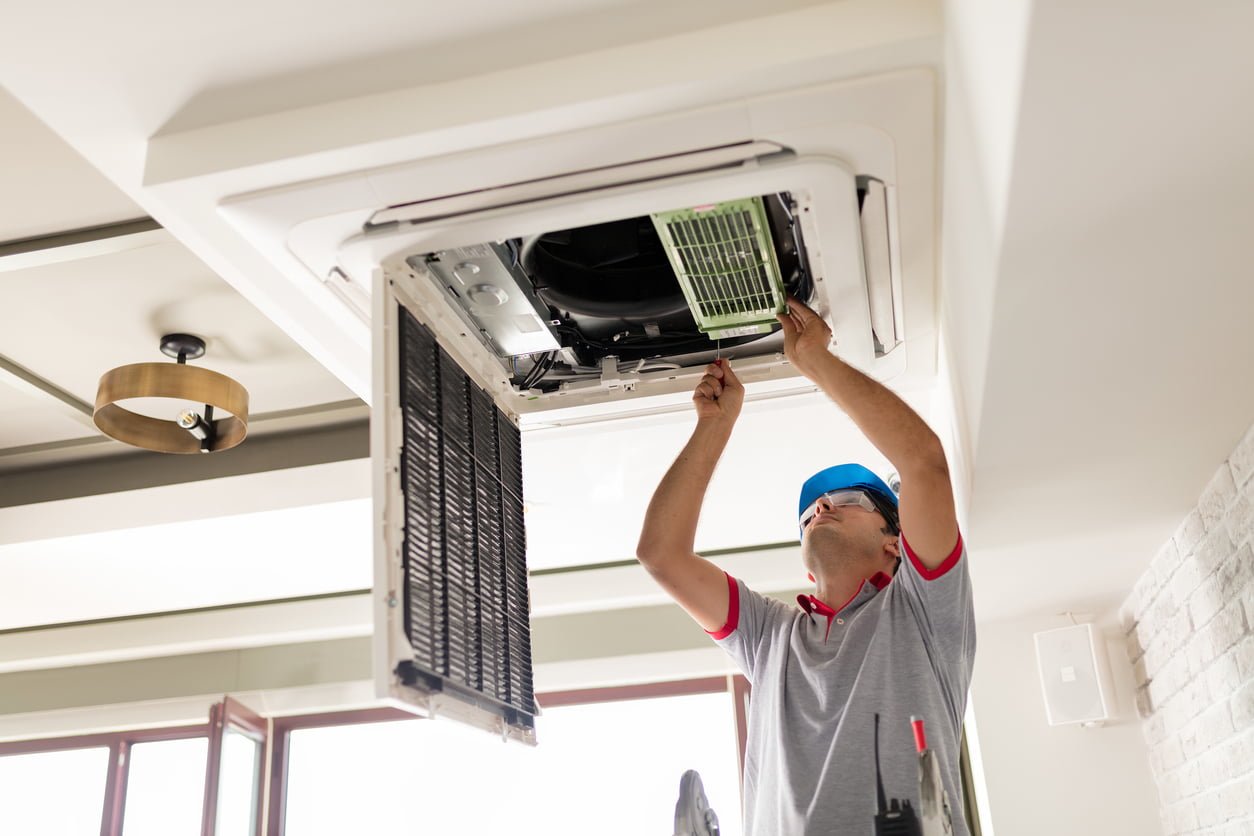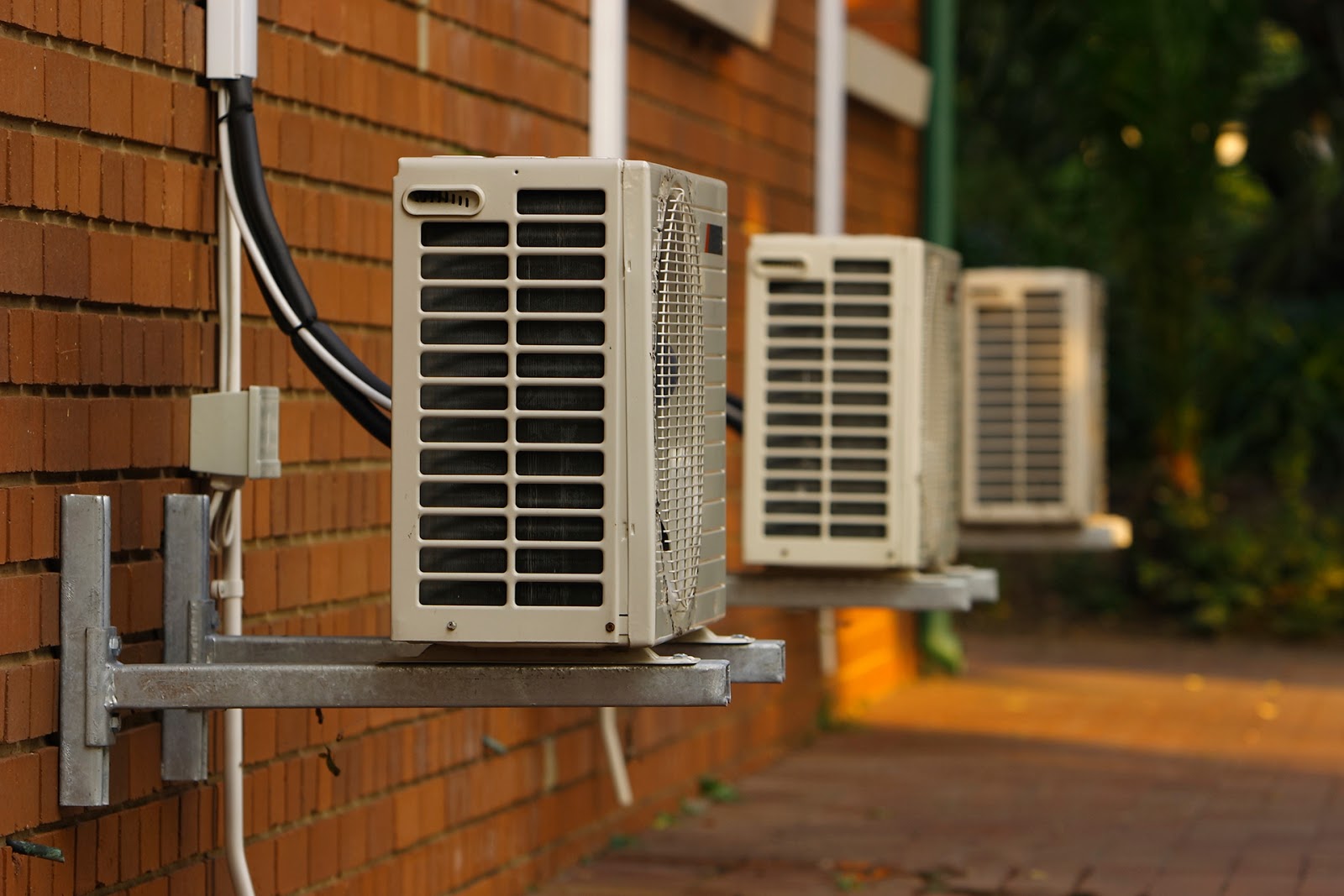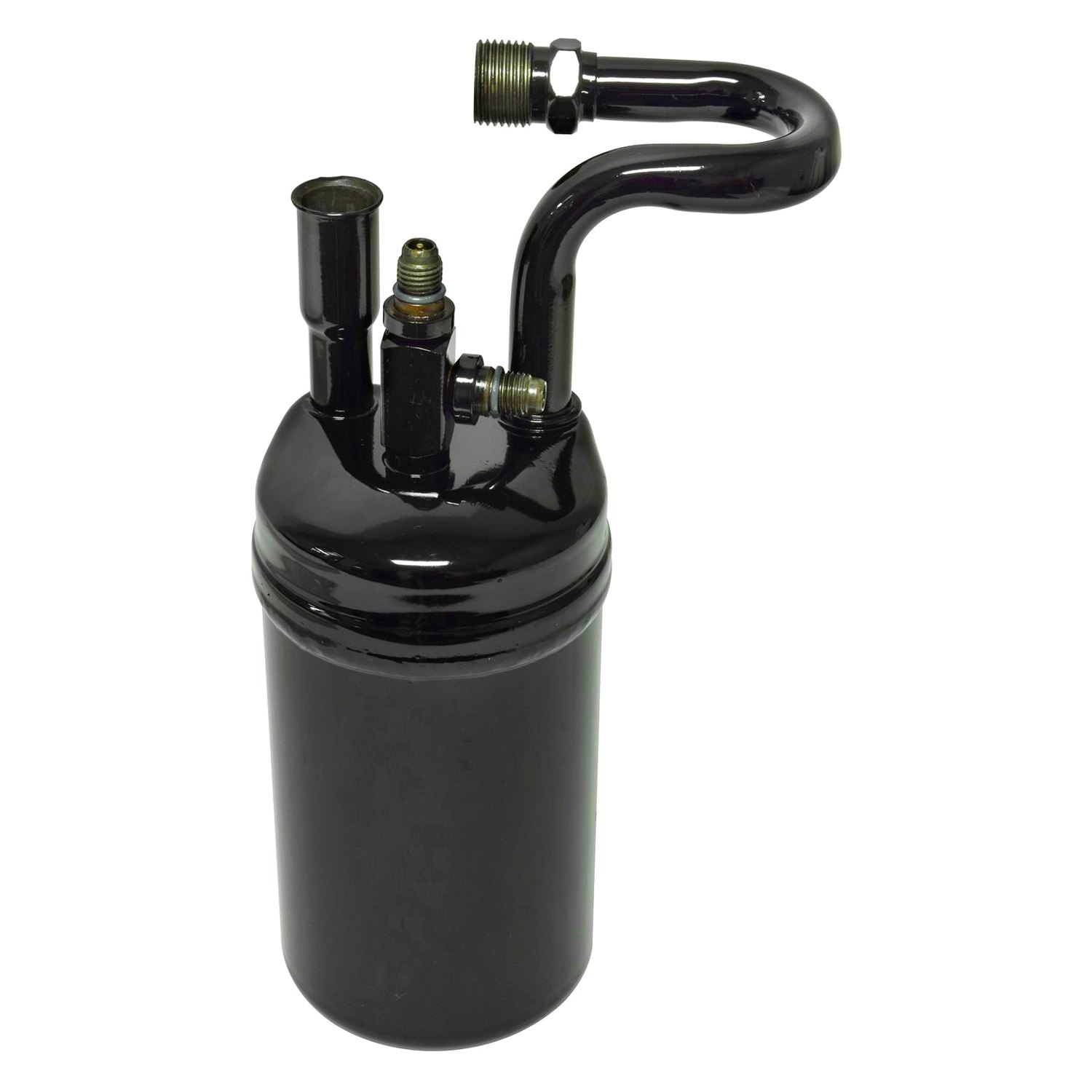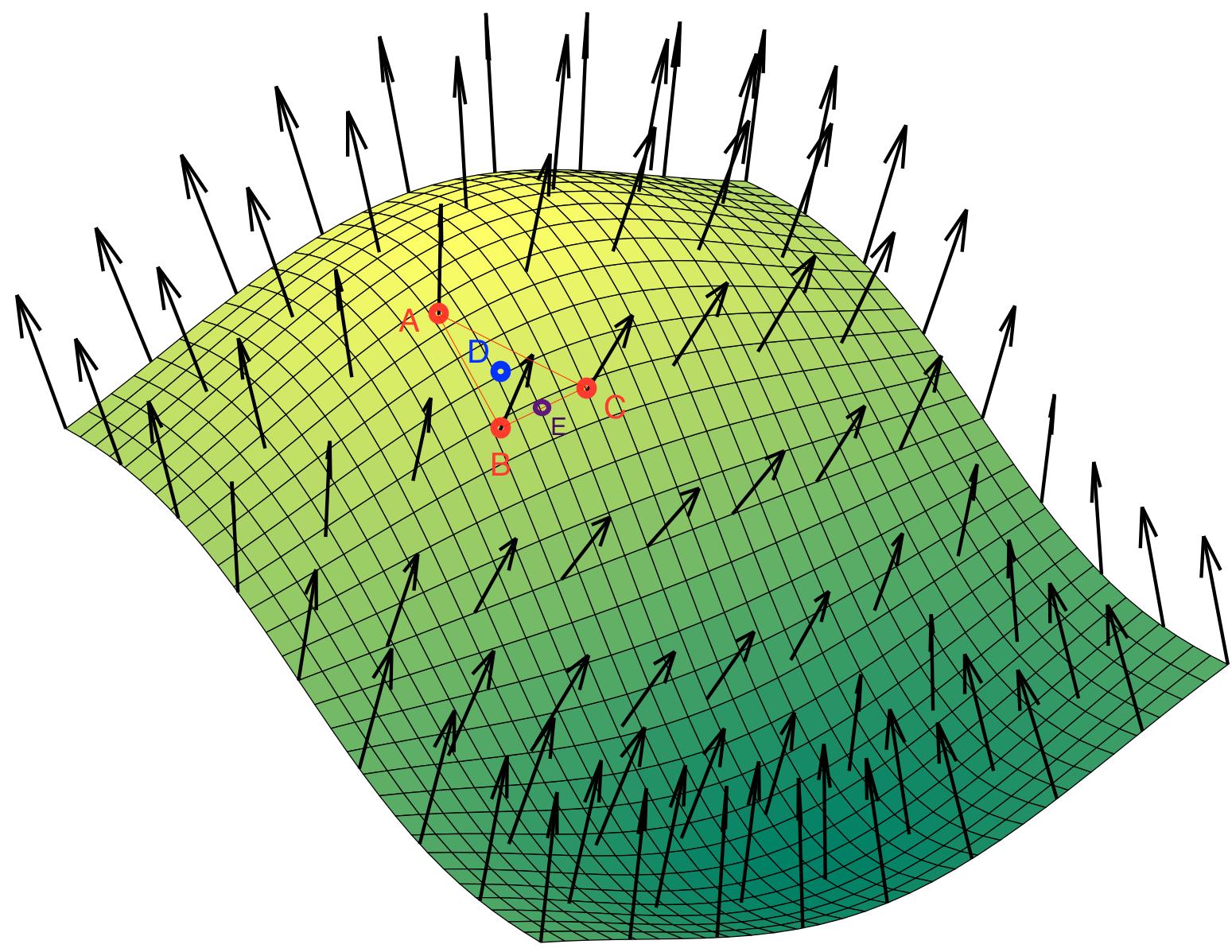Home>Home Maintenance>What Is A Normal Air Conditioning Temperature
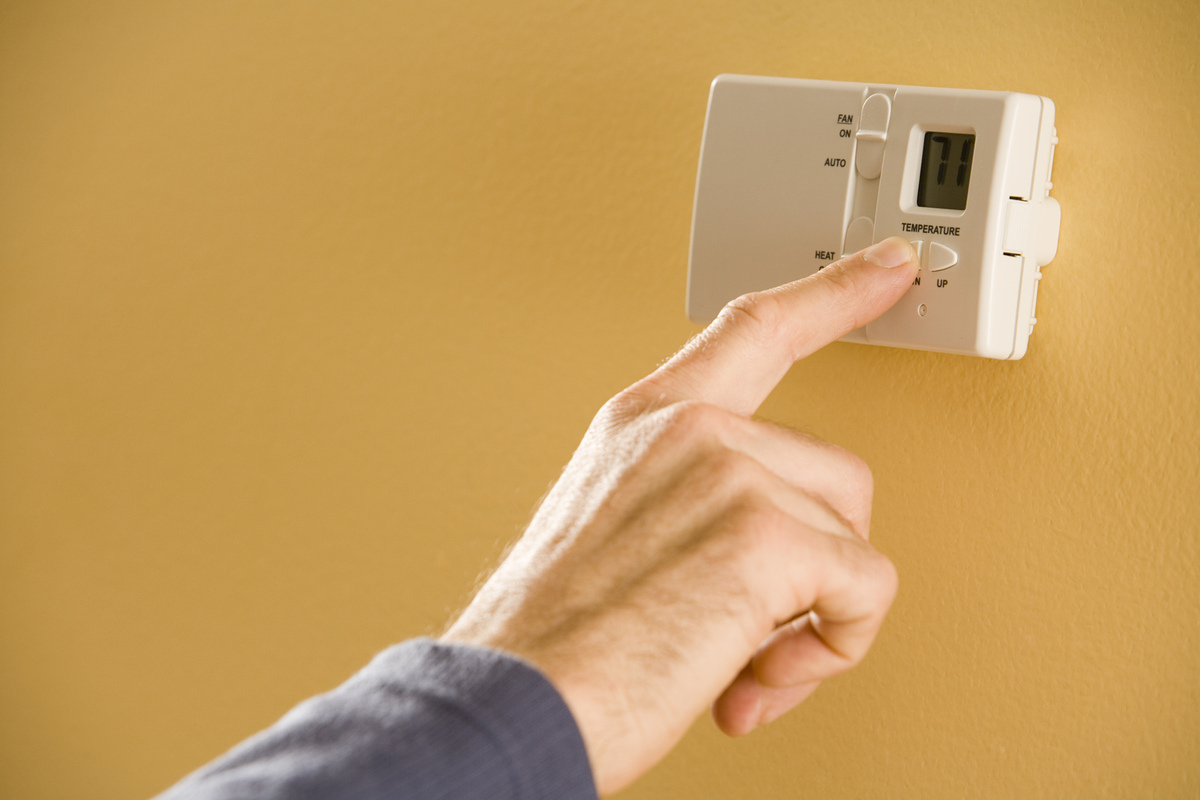

Home Maintenance
What Is A Normal Air Conditioning Temperature
Modified: October 18, 2024
Maintain home comfort with the right air conditioning temperature. Learn what is considered normal and optimize your home maintenance with expert tips.
(Many of the links in this article redirect to a specific reviewed product. Your purchase of these products through affiliate links helps to generate commission for Storables.com, at no extra cost. Learn more)
Introduction
Welcome to the world of home maintenance, where keeping your living space in top condition is key to comfort and well-being. One crucial aspect of maintaining a comfortable home environment is proper air conditioning. It’s important to know how to set the temperature correctly to achieve the optimal balance between coolness and energy efficiency.
When it comes to air conditioning, finding the right temperature can be a challenge. Everyone has their own comfort level, and it can be difficult to satisfy everyone’s preferences. However, there are some factors to consider when deciding on the ideal air conditioning temperature.
Factors such as the weather, your home’s insulation, and even your daily activities can all influence the temperature at which you feel comfortable. By understanding these factors and making informed decisions, you can create a comfortable living environment while minimizing energy consumption.
In this article, we will delve into the various factors that should be taken into account when setting the air conditioning temperature. We will explore the recommended temperature for different seasons, the impact of temperature on energy consumption, and strategies for finding the right balance between comfort and efficiency. So, let’s dive in and discover how to achieve the perfect air conditioning temperature for your home.
Key Takeaways:
- Finding the perfect air conditioning temperature involves considering weather, insulation, and personal preferences. Experiment, communicate, and use energy-efficient settings to strike the right balance for comfort and energy savings.
- Humidity levels impact how we perceive temperature. Control humidity with dehumidifiers or humidifiers to enhance comfort. Regular maintenance is crucial for optimal air conditioning performance and energy efficiency.
Factors to consider when setting the air conditioning temperature
Setting the air conditioning temperature requires careful consideration of various factors. By taking these factors into account, you can create a comfortable living environment while optimizing energy efficiency. Here are some key factors to consider:
- Weather: The outside temperature plays a significant role in determining the ideal indoor temperature. During hot summer days, you may need to set the temperature lower to counteract the heat. On cooler days, you can set the temperature slightly higher to conserve energy.
- Insulation: The insulation of your home affects how well it retains cool air. If your home is well-insulated, you may be able to set the temperature slightly higher without sacrificing comfort. On the other hand, if your home has poor insulation, you may need to set the temperature lower to counteract the heat gain.
- Daily activities: Consider your daily activities when setting the air conditioning temperature. If you spend most of your day at home and engage in physically demanding tasks, you may prefer a cooler temperature to keep you comfortable. On the other hand, if you’re away from home for extended periods or engage in sedentary activities, you may be comfortable with a slightly higher temperature.
- Number of occupants: The number of people in your home also affects the ideal air conditioning temperature. A larger number of occupants can generate more body heat, necessitating a lower temperature to maintain comfort. Conversely, if you live alone or with fewer people, you may be able to set the temperature slightly higher.
- Personal preferences: Ultimately, personal preferences play a crucial role in determining the air conditioning temperature. Everyone has their own comfort level, so it’s important to strike a balance that satisfies the majority while taking energy efficiency into consideration. Communicate with your household members to find a temperature that works for everyone.
By carefully considering these factors, you can determine the most suitable air conditioning temperature for your home. It’s important to find a balance that provides comfort while minimizing energy consumption. In the next section, we will explore the recommended temperature ranges for different seasons to further guide your decision-making process.
Recommended temperature for different seasons
As the seasons change, so do our comfort preferences when it comes to air conditioning. It’s important to adjust the temperature settings accordingly to ensure both comfort and energy efficiency. Here are some recommended temperature ranges for different seasons:
Summer:
During the sweltering summer months, it’s essential to keep your home cool and comfortable. The recommended temperature range for air conditioning during summer is typically between 72°F (22°C) and 78°F (25°C). This range provides a refreshing coolness indoors while still allowing for energy efficiency. If you prefer a colder environment, aim for the lower end of the range, but be mindful of energy consumption.
Spring and fall:
In the transitional seasons of spring and fall, the weather can be unpredictable, and the need for air conditioning may vary. A recommended temperature range during these seasons is between 68°F (20°C) and 74°F (23°C). This range provides a comfortable indoor environment without the need for excessive cooling. Consider opening windows or using natural ventilation to take advantage of pleasant weather conditions and reduce reliance on air conditioning.
Winter:
In winter, when heating becomes a priority, it’s important to adjust the air conditioning accordingly. A recommended temperature range during winter is around 68°F (20°C). This range provides a comfortable and cozy environment while minimizing energy consumption. You can layer clothing or use blankets to increase personal comfort without relying heavily on air conditioning.
It’s important to note that these recommended temperature ranges serve as general guidelines and can vary depending on individual preferences and geographic locations. Experimentation and communication with household members can help determine the most suitable temperature for your specific needs.
Next, let’s examine the impact of temperature on energy consumption and explore strategies to strike the right balance between comfort and energy efficiency.
Impact of temperature on energy consumption
The temperature you set on your air conditioning system can have a significant impact on your overall energy consumption. Understanding this impact is crucial in finding the right balance between comfort and energy efficiency. Here’s how temperature affects energy consumption:
Lower temperature: When you set a lower temperature, your air conditioning system works harder to cool the air, resulting in increased energy usage. Even a slight decrease in temperature can lead to a noticeable increase in energy consumption. Therefore, it’s important to avoid setting the temperature lower than necessary.
Higher temperature: On the other hand, setting a higher temperature can reduce energy consumption. For every degree you raise the temperature, you can potentially save up to 3% on your energy bill. By aiming for a slightly higher temperature, you can achieve significant energy savings while still maintaining a comfortable indoor environment.
Energy-efficient settings: Many modern air conditioning systems offer energy-saving features such as programmable thermostats. These allow you to set different temperature levels throughout the day to optimize comfort and reduce energy consumption. For example, you can program the system to be cooler during active hours and slightly higher during periods when no one is home or during nighttime hours.
Smart technology: Smart thermostats can further enhance energy efficiency by learning your habits and adjusting the temperature accordingly. These devices can adapt to your lifestyle, automatically adjusting the temperature based on your patterns and preferences. They also often come with remote control capabilities, allowing you to monitor and adjust the temperature even when you are not at home.
By understanding the impact of temperature on energy consumption and utilizing energy-saving features, you can significantly reduce your energy usage, lower your utility bills, and minimize your environmental impact.
Now that we’ve explored the impact of temperature on energy consumption, let’s move on to finding the right balance between comfort and energy efficiency.
Finding the right balance for comfort and energy efficiency
When it comes to setting the air conditioning temperature, finding the perfect balance between comfort and energy efficiency is key. By following these tips, you can create a comfortable living environment while minimizing energy consumption:
1. Experiment and adjust:
Start by experimenting with different temperatures to find the level of coolness that suits you and your household members. Begin at a slightly higher temperature, and gradually lower it until you reach a comfortable balance. Remember to consider the external factors mentioned earlier, such as weather, insulation, and daily activities, when making adjustments.
2. Use fans and natural ventilation:
Supplementing your air conditioning with fans can help circulate cool air throughout your home. Ceiling fans or portable fans can create a breeze and make the room feel cooler without the need to lower the temperature significantly. Additionally, make use of natural ventilation by opening windows during cooler periods of the day or night to let in fresh air.
3. Maintain proper insulation:
Ensure that your home is properly insulated to prevent cool air from escaping and hot air from entering. Insulation helps maintain a consistent temperature, reducing the need to set the air conditioning at lower levels. Inspect doors, windows, and other potential areas of air leakage, and seal any gaps or cracks to improve energy efficiency.
4. Take advantage of programmable settings:
If your air conditioning system has programmable settings or a smart thermostat, utilize these features to set different temperature levels throughout the day. Program the system to be slightly warmer when you’re away from home or during nighttime hours when you’re asleep. This way, you can conserve energy during times when cooling is not a top priority.
5. Dress appropriately:
Instead of relying solely on the air conditioning to keep you cool, dress in lightweight and breathable clothing, and use blankets or throws for added warmth in cooler seasons. Adjusting your attire to match the temperature can help reduce the need for extreme cooling or heating in your home.
By finding the right balance for comfort and energy efficiency, you can enjoy a comfortable living environment while reducing your carbon footprint and saving money on energy bills. Remember, it may take some trial and error to find the optimal temperature setting, so be patient and open to adjustments based on your needs and preferences.
Next, let’s explore how adjusting the temperature based on personal preferences can contribute to a comfortable home environment.
Adjusting the temperature based on personal preferences
Setting the air conditioning temperature is a highly subjective matter, as everyone has their own comfort level. Understanding and accommodating personal preferences can greatly enhance the overall comfort of your home. Here are some considerations when adjusting the temperature based on personal preferences:
1. Communicate and compromise:
In a shared living space, it’s important to communicate with your household members about their temperature preferences. Each person may have different comfort levels, so finding a compromise is key. Discuss the temperature range that works for everyone and be willing to adjust within that range to accommodate individual needs.
2. Individual comfort zones:
Recognize that individuals may have different comfort zones within the same space. While one person may prefer a cooler temperature, another may find it too chilly. Consider using fans or space heaters to provide personalized comfort for individual areas or rooms, allowing each person to adjust the temperature to their liking without affecting the entire home.
3. Flexibility and adaptability:
Be open to adjusting the temperature based on daily activities and circumstances. If you are engaged in physical activities or cooking, you may prefer a slightly cooler temperature to offset the heat. Conversely, during quieter moments or when relaxing, you may be comfortable with a slightly warmer temperature. Being flexible and adaptable can help create a comfortable environment for different situations.
Read more: What Is The Purpose Of Air Conditioning
4. Sleep preferences:
Consider adjusting the temperature during nighttime hours to optimize sleep comfort. Research suggests that a cool and slightly lower temperature, around 65°F (18°C), can promote better sleep quality. Experiment with different temperatures and bedding materials to find the ideal sleeping conditions that promote restful sleep for you and your family members.
5. Keep track of energy usage:
While personal comfort is important, it’s essential to be conscious of energy usage and its impact on the environment. Monitor your energy consumption and make necessary adjustments to find a balance between comfort and energy efficiency. Remember that even small changes in temperature can make a significant difference in energy consumption over time.
By considering personal preferences and accommodating individual comfort zones, you can create a harmonious living environment where everyone feels comfortable and satisfied. Remember, finding the right temperature is a continuous process that may require occasional adjustments based on feedback and changing seasons.
In the next section, we will explore the impact of humidity on perceived temperature and its importance in maintaining a comfortable home environment.
Understanding the impact of humidity on perceived temperature
When it comes to creating a comfortable indoor environment, it’s important to consider not only the air temperature but also the humidity level. Humidity, which refers to the amount of moisture in the air, can greatly influence how we perceive temperature. Here’s how humidity affects our comfort:
High humidity: In a high-humidity environment, the air feels damp and sticky, making us feel warmer than the actual temperature. The excess moisture in the air hinders our body’s ability to cool down through sweat evaporation, leading to discomfort. Higher humidity levels can make your home feel hotter and may require lower air conditioning temperatures to maintain comfort.
Low humidity: Conversely, in a low-humidity environment, the air feels dry, and we may perceive the temperature to be cooler than it actually is. Dry air allows for quicker evaporation of sweat, which can lead to a cooling effect on the skin. In low-humidity conditions, you may be able to set the air conditioning temperature slightly higher without sacrificing comfort.
High or low humidity can affect not only your comfort but also the health of your home. Excess moisture can promote the growth of mold and mildew, while dry conditions can cause issues with respiratory health and damage wooden furniture or flooring. Therefore, it’s important to maintain an optimal humidity level of around 40 to 60 percent for a comfortable and healthy indoor environment.
To control humidity levels in your home, consider the following strategies:
1. Use a dehumidifier:
If you live in a high-humidity area or experience excessive moisture in your home, a dehumidifier can help remove excess moisture from the air. This can make your home feel cooler and more comfortable without the need for lower air conditioning temperatures.
Read more: What Is A Register In Air Conditioning
2. Utilize natural ventilation:
Opening windows or using fans to introduce fresh air can help reduce humidity levels. This is particularly effective during cooler periods of the day or in areas where the outdoor humidity is lower than indoors. Keep in mind that this strategy may be less effective in high-humidity regions or during humid weather conditions.
3. Maintain proper ventilation:
Ensure that your home has adequate ventilation in areas prone to moisture, such as bathrooms and kitchens. Proper ventilation helps reduce humidity levels, preventing the buildup of excess moisture and promoting a healthier home environment.
4. Use a humidifier:
In dry environments or during the winter season, a humidifier can add moisture to the air, making it feel more comfortable and preventing issues such as dry skin, dry throat, and static electricity. This can allow you to set the air conditioning temperature slightly higher while still maintaining a comfortable indoor environment.
By understanding the impact of humidity on perceived temperature and implementing strategies to control humidity levels, you can create a more comfortable and healthy home environment. Now, let’s explore the importance of regular maintenance for optimal air conditioning performance.
Importance of regular maintenance for optimal performance
To ensure optimal performance and efficiency of your air conditioning system, regular maintenance is essential. Neglecting maintenance can not only lead to reduced performance but also result in higher energy consumption, costly repairs, and a shortened lifespan of your equipment. Here’s why regular maintenance is important:
Read more: What Is Dual Air Conditioning In A Car
1. Improved energy efficiency:
A well-maintained air conditioning system operates more efficiently, consuming less energy to cool your home. Regular maintenance includes tasks such as cleaning or replacing air filters, ensuring proper airflow, and inspecting and cleaning the cooling coils. These actions reduce the workload on your system, allowing it to operate at peak efficiency and saving you money on energy bills.
2. Extended equipment lifespan:
Proper maintenance helps prolong the lifespan of your air conditioning system. Regular inspections and tune-ups can catch minor issues before they escalate into major problems that require expensive repairs or even premature replacement of the unit. By taking care of your equipment, you can maximize its lifespan and get the most out of your investment.
3. Enhanced indoor air quality:
Air conditioning systems not only cool the air but also help filter out dust, allergens, and other pollutants. However, without regular maintenance, the accumulation of dirt, dust, and debris in the HVAC system can hinder its ability to effectively filter indoor air. Regular cleaning and maintenance ensure that your system continues to provide clean and healthy air for you and your family.
4. Prevention of breakdowns:
Regular maintenance helps identify and fix small issues before they escalate into major breakdowns. During routine maintenance, technicians can inspect important components, such as motors, belts, and electrical connections, to ensure they are functioning properly. Addressing minor problems early on can prevent inconvenient breakdowns, especially during periods of high heat when your air conditioning is most needed.
5. Safety considerations:
Maintaining your air conditioning system also includes inspecting and cleaning the condensate drain line. A clogged drain line can lead to water leakage, which can cause damage to your home and pose a safety hazard. Regular maintenance helps ensure that your system operates safely and minimizes the risks of water damage or electrical issues.
It’s recommended to schedule professional maintenance at least once a year, preferably before the start of the cooling season. Routine maintenance can be done by trained technicians who can assess the overall condition of your system, address any concerns, and provide expert recommendations to keep your air conditioning system running smoothly.
By investing in regular maintenance, you can enjoy optimal performance, increased energy efficiency, improved indoor air quality, and a longer lifespan for your air conditioning system. Now, let’s wrap up with a summary of the key points discussed in this article.
Conclusion
Setting the air conditioning temperature correctly is essential for maintaining a comfortable home environment while optimizing energy efficiency. By considering factors such as weather, insulation, daily activities, and personal preferences, you can find the ideal temperature that suits the needs of your household.
During the hot summer months, aim for a temperature range between 72°F (22°C) and 78°F (25°C). In spring and fall, adjust the temperature to a range between 68°F (20°C) and 74°F (23°C). In winter, a temperature of around 68°F (20°C) is typically sufficient to provide a cozy indoor environment.
It’s important to keep in mind the impact of temperature on energy consumption. Lowering the temperature increases energy usage, while raising it can lead to energy savings. Utilizing energy-efficient settings and smart technology can further enhance energy optimization.
Finding the right balance for comfort and energy efficiency involves experimentation, communication, and adaptability. Consider personal preferences, dress appropriately, and make use of fans and natural ventilation to maintain comfort without solely relying on air conditioning.
“Striking the right balance between comfort and energy efficiency requires considering factors such as weather, insulation, daily activities, and personal preferences.”
Understanding the impact of humidity is equally important. High humidity can make the indoor environment feel warmer, while low humidity can create a cooler perception. Use dehumidifiers or humidifiers to control humidity levels and enhance comfort in your home.
Regular maintenance is vital for optimal air conditioning performance. It improves energy efficiency, extends the equipment’s lifespan, enhances indoor air quality, prevents breakdowns, and ensures safety. Schedule professional maintenance at least once a year to keep your system in top condition.
By incorporating these considerations, you can create a comfortable home environment while minimizing energy consumption, reducing costs, and promoting environmental sustainability. Remember to adjust the temperature based on personal preferences, communicate with household members, and prioritize regular maintenance for optimal performance.
Now that you have a comprehensive understanding of how to set the air conditioning temperature for comfort and energy efficiency, it’s time to apply these insights and enjoy a cool and comfortable living space!
Frequently Asked Questions about What Is A Normal Air Conditioning Temperature
Was this page helpful?
At Storables.com, we guarantee accurate and reliable information. Our content, validated by Expert Board Contributors, is crafted following stringent Editorial Policies. We're committed to providing you with well-researched, expert-backed insights for all your informational needs.
